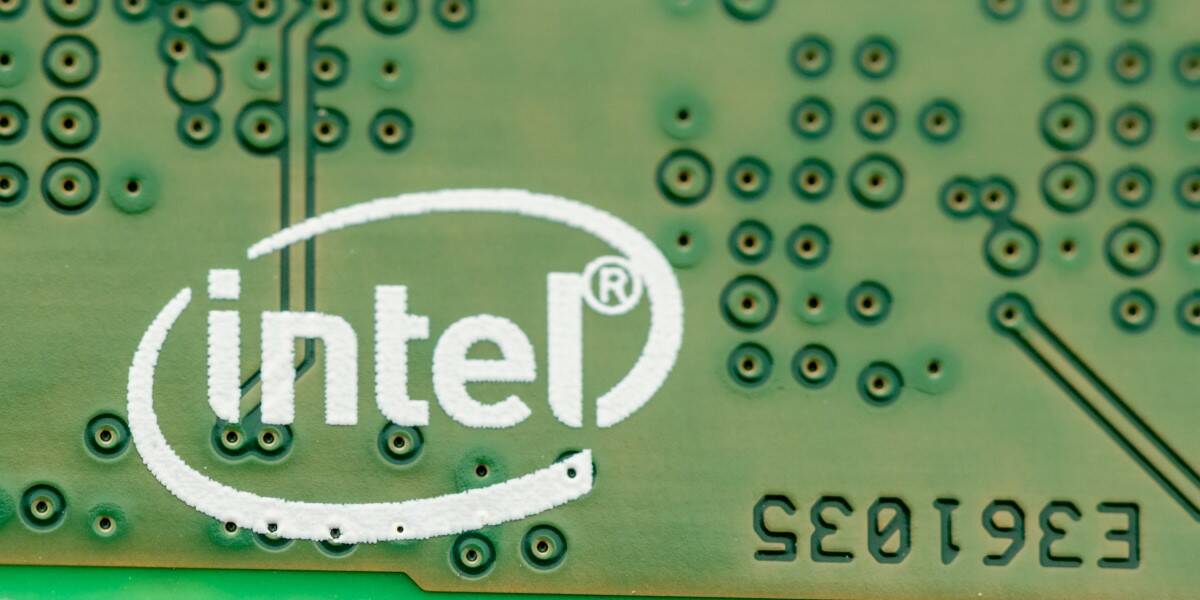Apple Kicked An M1-shaped Hole In Intel's Quarter

Intel has blamed Apple's switch to its own M1 silicon in Macs for a dip in sales at its client computing group, and foreshadowed future unpleasantness caused by supply chain issues and China's recent internet crackdowns.
Chipzilla's finances were robust for the third quarter of its financial year: revenue of $19.2 billion was up five per cent year over year, while net income of $6.8 billion was up 60 per cent compared to 2020's Q3.
But revenue for the client computing group was down two points. CFO George Davis – whose retirement was announced today – was at pains to point out that were it not for Apple quitting Intel silicon and Chipzilla exiting the modem business, client-related revenue would have risen ten per cent.
Davis predicted another shock from declining demand from China. CEO Pat Gelsinger told investors that as a result of China's recent crackdown on gaming "all of the cloud vendors are adjusting their offerings to meet that new regulatory environment, so we expect there is a quarter or two for them to digest what they would look like."
Gelsinger predicted China's clouds would return to their Xeon-hoovering ways. "We expect a nice recovery in that business area for us and we expect that there will be a return to normalcy next year in that area of our business," he opined.
All of China’s clouds are adjusting to the new regulatory environment
For now, Intel's datacentre group is doing fine. Quarterly revenue of $6.5 billion was up ten per cent year over year and a million third-gen Xeons have been sold since April, with another million predicted to sell in Q4. Execs said Intel's next datacentre architecture, Sapphire Lake, will debut in Q1 2022 and provide further momentum.
Execs were also very bullish about the Alder Lake client architecture – Intel's first attempt at mixing core types on a single die – which appears to be the subject of an event the company will stage next week.
PC-makers, Davis beamed, are already focusing on Intel's higher-end client products. As Alder Lake's ability to match workloads to core types can, at the time of writing, only be driven by Windows 11, Intel execs anticipate a nice boost from Microsoft's new OS.
- Executive exodus from Intel depth and tracking tech arm RealSense continues
- Intel teases 'software-defined silicon' with Linux kernel contribution – and won't say why
- 'Father of the Xbox' Seamus Blackley issues Twitter apology to AMD over last-minute switch to Intel CPUs
Supply chain constraints continue to bite. Gelsinger said power supply and network adapter shortages are holding back server sales.
"We would be shipping a lot more units … if we weren't constrained by the supply chain of these other components," he lamented.
Investors were told supply chains are improving, and that Intel's various efforts to improve manufacturing efficiency and build new facilities are helping to address the issue in both short and long terms.
But when Davis offered financial guidance, he predicted "revenue in 2022 of at least $74 billion despite ongoing supply constraints.
"As supply normalizes and our investments add capacity and drive leadership products into the marketplace, we expect to see our revenue growth accelerate to a ten per cent to 12 per cent CAGR over the next four to five years,” he added.
To get there, Intel must spend bucketloads of cash. Forecasts called for next year's capital expenditure to fall between $25 billion and $28 billion.
Gelsinger felt confident Intel can deliver.
"The company is running well," he said. "We are confident in our process technology and product roadmaps. Our business is healthy, and our markets remain strong. And above all, we are executing on our plan." But the plan is young – Gelsinger only won the big chair in February 2021n – and Intel has significant obstacles in its path. Consider years of building factories , another big customer – Alibaba – rolling its own Arm-powered silicon, an increasingly-confident AMD, surging interest in RISC-V for all manner of devices and other rivals like TSMC making their own investments to meet burgeoning demand for silicon.
Confidence is one thing … ®
From Chip War To Cloud War: The Next Frontier In Global Tech Competition
The global chip war, characterized by intense competition among nations and corporations for supremacy in semiconductor ... Read more
The High Stakes Of Tech Regulation: Security Risks And Market Dynamics
The influence of tech giants in the global economy continues to grow, raising crucial questions about how to balance sec... Read more
The Tyranny Of Instagram Interiors: Why It's Time To Break Free From Algorithm-Driven Aesthetics
Instagram has become a dominant force in shaping interior design trends, offering a seemingly endless stream of inspirat... Read more
The Data Crunch In AI: Strategies For Sustainability
Exploring solutions to the imminent exhaustion of internet data for AI training.As the artificial intelligence (AI) indu... Read more
Google Abandons Four-Year Effort To Remove Cookies From Chrome Browser
After four years of dedicated effort, Google has decided to abandon its plan to remove third-party cookies from its Chro... Read more
LinkedIn Embraces AI And Gamification To Drive User Engagement And Revenue
In an effort to tackle slowing revenue growth and enhance user engagement, LinkedIn is turning to artificial intelligenc... Read more

